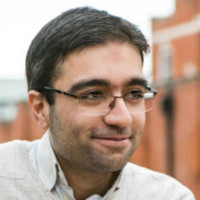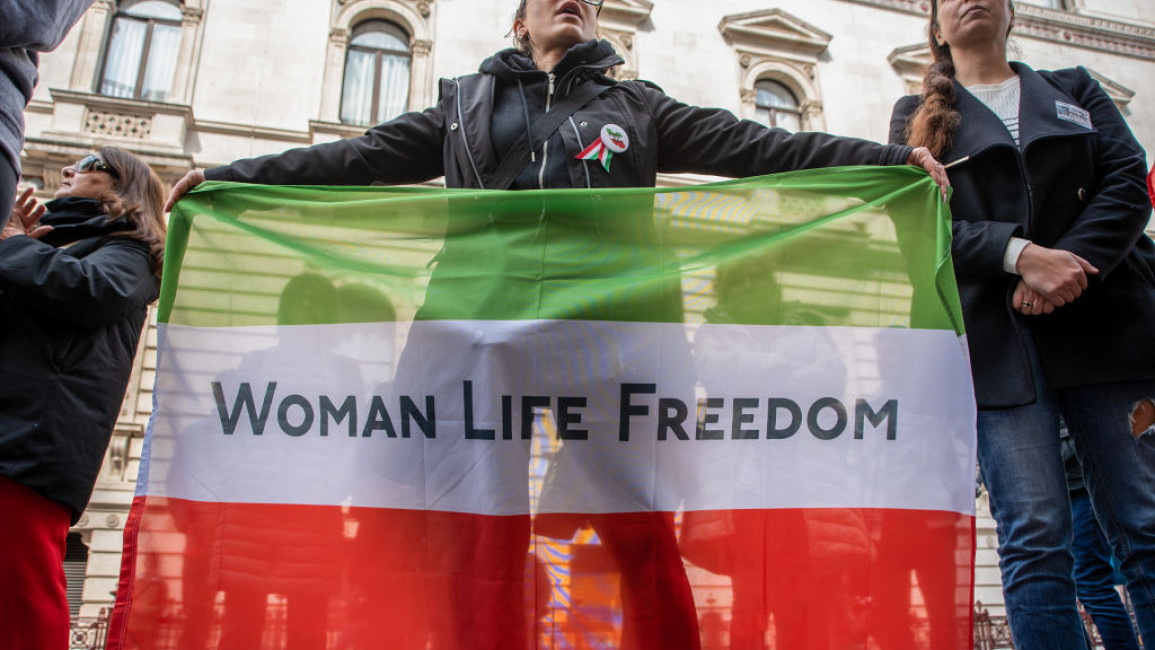
Growing ruptures among Iranians are weakening the prospects of the protest demands being met
When 22-year-old Mahsa Amini died in the custody of the morality police last year, after being arrested for allegedly wearing a headscarf loosely, years of pent-up anger and resentment burst into the open. Protesters’ demands for the abolition of the compulsory hijab soon morphed into a call for regime change.
Protests endured for nearly four months, posing a seismic challenge to the legitimacy of the Islamic Republic, even though they eventually fizzled out in the face of a merciless crackdown resulting in hundreds of deaths and thousands of arrests. Notwithstanding the severity of the suppression, a new momentum shaped around the rallying cry “Woman, Life, Freedom” and Iranians of all stripes found purpose in fighting for a democratic transition catalysed by that emancipatory movement.
For the first time in years, a dormant diaspora was rejuvenated and reasserted its identity. Their solidarity organising weekly demonstrations in different corners of the world, their social media campaigning and their outreach to governments demanding increased pressure on the Islamic Republic were startling in magnitude. A bond was rolled out that eroded the longstanding disconnect between the diaspora and their 85 million fellow Iranians at home.
''Although the popular protests were a moment of national reckoning over justice and freedom, it also highlighted the society’s splits so vividly.''
But that newfound rapport wasn’t lasting. As prospects of change appeared to be more tangible, fault lines also became more chronic, and a wrangling over the shares of power in a reframed Iran eclipsed the original ideals of the uprising, that was to democratise a country under authoritarian rule and retrieve the trampled rights of the women, minorities, and civil society.
The unprecedented uprising was an opportunity for the opposition forces to take stock of their popular base, shore up their media presence and publicise their plans for a transition away from the Islamic Republic and their agenda for governance. An animated conversation meant the sympathisers of each stream and figurehead would face off in the cyberspace and in real life, and it wasn’t long before their exchanges turned bitter and even violent.
Those favouring a secular republic took a swipe at the monarchists aspiring to reinstate Iran’s deposed kingdom, and those sympathising with the exiled royal family bickered with those whose immediate concern has been to empower the disenfranchised ethnic minorities, often accused of harbouring secessionist sentiments. A less partisan collective of the diaspora also found the different opposition groups squaring up to each other unsightly, warning that if it continued democracy for Iran would remain beyond reach.
Accusations of dual loyalty have been swirling around unabated, and different actors kept inculpating each other as being the apologists and apostles of the Islamic Republic disguised as freedom-seeking democrats. Voices inside the country were more prone to be smeared as sugarcoating the government’s atrocities behind a smokescreen of superficially critical remarks.
This is ironic given the frequency of solidarity messages being issued by the opposition mouthpieces backing the “people of Iran” – if anyone living in Iran weighing in on the protest movement was to be demeaned as a regime supporter only because their statements were not sufficiently radical or subversive, then wouldn’t the idea of sticking up for the people of Iran be only a pretence?
With time, any façade of dialogue was shredded, supplanted by altercation, which gave way to estrangement and lack of communication piecemeal. The various factions of the expatriate community were not talking to each other anymore, but talking at each other, engaged in one-sided messaging about what they believed would be the best for a democratic transformation in Iran that they claimed to be able to deliver.
This lack of communication and reproduction of echo chambers was also coming to pass within Iran’s borders, where a society comprising diverse demographic, ethnic, religious, cultural and ideological belongings was beset by further fragmentation. And, where adherents of varied intellectual persuasions were not listening to or understanding each other.
Although the popular protests were a moment of national reckoning over justice and freedom, it also highlighted the society’s splits so vividly.
The liberal-minded, progressive Iranians agitating for freedom of expression, separation of religion from politics and a pittance of personal rights are now perceived by the sizeable segment of the society that has long thrived on religious traditionalism, as waging a war on the God’s tenets, including the compulsory hijab.
Either because they are too orthodox in their thinking or because of their personal interests tied to the continuation of the status quo, these conservatives don’t comprehend the reasons why a large contingent of the Iranians are yearning for civil liberties that might appear to them to be incompatible with the government’s enactment of Islam, but in essence do not run counter to any Islamic principle.
Alongside all of this, the conservatives and pious Iranians, whose numbers shouldn’t be underrated, are construed by their more secular-minded, urban fellow citizens as reactionary and hidebound, reminiscing the Taliban whose interpretation of religion is widely seen to be contorted. The young Iranians who were the propellers of the Woman, Life, Freedom thrust, see this community of devout regime loyalists as the stumbling block to the redemption of their country and spoilers of liberalism bogged down in medieval times.
The mishap is that these two groups also no longer engage in any respectful dialogue. Either on social media or in the public sphere, they have given up on talking or at least trying to bridge the gaps in their respective world views, and their alienation feeds the increased polarisation of a society that wasn’t very harmonious even before the protests erupted. They rehash their own talking points, and when ideas clash, they “block” or deplatform each other.
The fact that avenues for dialogue between Iranians at home and abroad have shrunk so markedly and dissenting views and lifestyles are hardly being tolerated, sometimes translating into real-life physical violence, is the scourge of a phenomenal outburst of emotions that haven’t been channeled to effect positive change. This is indeed a by-product of Iran’s crisis of leadership. Within the country’s geographical borders, 85 million people remain at the mercy of intractable elites who are not willing to revise their rotten policies and modus operandi. In the diaspora, of the many vocal celebrities promising democracy, someone with genuine leadership traits who can unite all those with an allegiance to change, continues to be missing.
Kourosh Ziabari is an award-winning Iranian journalist and reporter. He is the Iran correspondent of Fair Observer and Asia Times. He is the recipient of a Chevening Award from the UK's Foreign and Commonwealth Office and an American Middle Eastern Network for Dialogue at Stanford Fellowship.
Follow him on Twitter: @KZiabari
Have questions or comments? Email us at: editorial-english@newarab.com
Opinions expressed here are the author's own, and do not necessarily reflect those of her employer, or of The New Arab and its editorial board or staff.


![President Pezeshkian has denounced Israel's attacks on Lebanon [Getty]](/sites/default/files/styles/image_684x385/public/2173482924.jpeg?h=a5f2f23a&itok=q3evVtko)



 Follow the Middle East's top stories in English at The New Arab on Google News
Follow the Middle East's top stories in English at The New Arab on Google News


